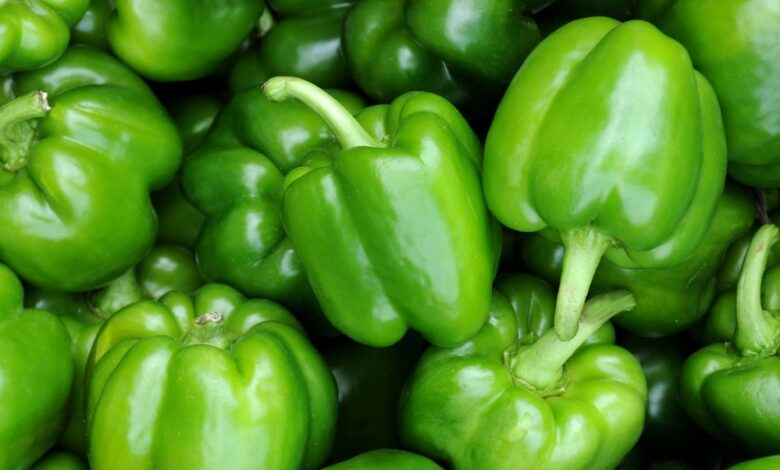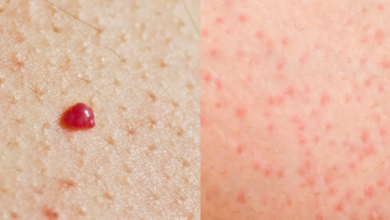New 2021 Dirty Dozen List Report by EWG Includes Leafy Greens, Peppers, and Citrus

- The EWG 2021 Dirty Dozen list has been released, and experts have added more leafy greens and bell peppers for their elevated levels of pesticide.
- Collard and mustard greens join kale in the top 3, whereas hot and bell peppers have made the top 10 for conventional produce.
- The trace amounts of pesticides highlighted in the report are below federal guidelines and can be avoided by swapping to organic produce or by focusing on frozen varieties instead. The EWG’s Clean Fifteen list highlights conventional produce that is grown without elevated pesticide residue.
The Environmental Working group (referred to as the EWG) has published its latest list of fruits and vegetables that experts at the organization have determined contain elevated levels of pesticide. Over the last year, the nonprofit has analyzed randomized samplings of produce across the nation to create its Dirty Dozen list, which highlights the nature of conventional farming and how certain practices may pose a risk to consumers’ health. Using the same data stemming from tests, the EWG also creates a counterpart list called the Clean Fifteen, which highlights produce that contains virtually no traces of pesticides despite conventional growing methods.
The Dirty Dozen list has been published annually since 2004 and makes use of data generated by the United States Department of Agriculture, which is partially charged with regulating acceptable levels of pesticide in produce. It’s interesting to note that USDA data on pesticide levels are recorded after produce is washed and peeled when possible. This year’s full Dirty Dozen list is accompanied by a guide containing 46 different fruits and vegetables; here are the top 12 grocery store finds that EWG officials have determined contain the most pesticide residue in the produce aisle.
The 2021 Dirty Dozen Foods List:
- Strawberries
- Spinach
- Kale / Collard and Mustard Greens
- Nectarines
- Apples
- Grapes
- Cherries
- Peaches
- Pears
- Bell and Hot Peppers
- Celery
- Tomatoes
If you follow the list annually, you’ll notice that most of the ranking has remained steady since last year’s review. Strawberries remain likely to contain higher amounts of pesticides on surfaces, alongside a recent addition of kale and spinach that raised eyebrows in 2020. But the pesticide residues affecting these leafy greens — known as DCPA, a herbicide also sold under the brand name Dacthal — have also affected other staples in this section of the produce aisle. Collard and mustard greens are lumped in with kale on this year’s ranking as more than 90 different kinds of pesticide were traced backed to leafy greens as a whole; one sample of mustard greens had 20 different pesticides, for example, and kale and collards had as many as 17 in one sample.
The newest standalone addition to the Dirty Dozen list comes in towards its end: bell peppers and hot peppers. These vegetables are new to the list after being tested for the first time in a decade. USDA data indicates that 115 different pesticides were traced back to peppers, which the EWG notes is the highest amount of any item on their list. Primarily, the concern has to do with organophosphate insecticides that the EWG says can impact children’s cognitive development, and has been largely banned overseas.
The EWG also released a special report on citrus fruits, which aren’t represented in the top 12 spots on this list, but have caught the attention of the organization for trending upward in trace amounts of pesticide recorded. Tangerines in particular, but also a wide swath of oranges, mandarins, lemons, and grapefruit, contained a fungicide (imazalil) that the EWG says has been linked to cancer and hormone irregularities. “The average concentration of imazalil in the citrus EWG had tested was an astonishing 20 times more than the limit we recommend to protect children from cancer,” said EWG Toxicologist Alexis Temkin, PhD, referencing the organization’s independent non-federal guidelines.
This content is imported from Instagram. You may be able to find the same content in another format, or you may be able to find more information, at their web site.
While leafy greens and citrus may be under scrutiny this year, the EWG’s Dirty Dozen shouldn’t discourage you from the produce aisle entirely. Stefani Sassos, MS, RD, CDN, a registered dietitian in the Good Housekeeping Institute, says her background in holistic cancer treatment has frequently illustrated the benefits of going organic. But the nutritional benefits associated with all of the fruits and vegetables on that list far outweigh any potential blowback of eating non-organic produce.
The EWG’s standards for establishing its Dirty Dozen list are rigorous, which you should understand before ditching any of these produce items for good. Research published in 2011 suggests that the amounts of pesticide referenced in the EWG’s report are well below federal guidelines, and could be as much as 1,000 times below the Environmental Protection Agency’s limit. Data sourced by the Centers for Disease Control and Prevention suggests that a high majority of Americans (up to 90%) don’t eat enough vegetables and fruits as it is; both organic and non-organic vegetables offer plenty of nutrients like fiber, a myriad of vitamins, and too many minerals to count.
Should I buy organic produce?
You can largely avoid any potential health concerns raised by EWG officials, even those lesser risks, by shopping for organically raised vegetables and fruits. “Whether organic or conventionally grown, fruits and vegetables are critical components of a healthy diet,” said Thomas Galligan, Ph.D., a EWG toxicologist, in a comment about today’s release. “We urge consumers who are concerned about their pesticide intake to consider, when possible, purchasing organically grown versions of the foods on EWG’s Dirty Dozen, or conventional produce from our Clean Fifteen.”
Sassos points out that the USDA has drafted stricter regulations for organic foods; anything carrying a USDA Organic seal hasn’t been genetically engineered or come in contact with GMOs, and most synthetic substances are prohibited in organic farming. Plus, some data suggests that organic produce contains more antioxidant polyphenols; and these nutrients may reduce risk of chronic diseases, including cardiovascular disease and certain cancers. Sassos also stresses that some organic farming methods may end up being more sustainable than conventional farming due to soil integrity.
Fresh organic produce can be more expensive than conventionally grown options — and very hard to find in some areas. Whether you have budgetary concerns or don’t have access to a full variety, a great middle-ground is stocking up on frozen vegetables and fruits instead, especially for items within the Dirty Dozen that make the list annually (strawberries for example!). “Frozen produce is often preserved at its peak nutritional value, especially in relation to produce that may have sat in trucks or cargo for many days to reach your destination,” Sassos says.
The 2021 Clean Fifteen List
If you’re looking to stretch your budget or make an updated shopping list for the produce section in your local market, the EWG’s Clean Fifteen list can help. Tests on these produce items revealed conventional growing processes still left these as “clean” of pesticide residue as can be; the first seven items contain one of three pesticides in various amounts, and nearly 70% of all Clean Fifteen fruit and vegetables had no pesticide residues. Feel free to stock up on these items without any hesitation:
- Avocados
- Sweet corn
- Pineapple
- Onions
- Papaya
- Frozen sweet peas
- Eggplant
- Asparagus
- Broccoli
- Cabbage
- Kiwi
- Cauliflower
- Mushrooms
- Honeydew melon
- Cantaloupes
The Bottom Line: Eating any kind of produce is essential in a balanced, healthy diet, regardless of whether it was raised conventionally or has been designated organic. Don’t use the Dirty Dozen list as a reason to drift away from any of the items on the EWG’s report: The nutritional benefits far outweigh any of the minimal risk associated with the amounts of pesticide this list spotlights.
This content is created and maintained by a third party, and imported onto this page to help users provide their email addresses. You may be able to find more information about this and similar content at piano.io
Source link





